Wildlife Photographer, Steve Bloom, talks about how to photograph wildlife and what equipment is best for wildlife photography.
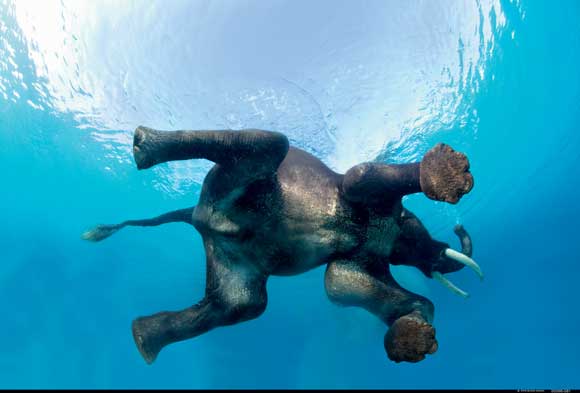
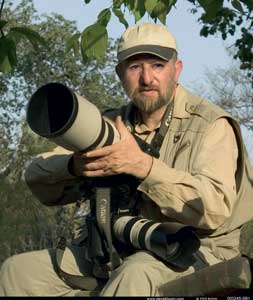 Within the sphere of wildlife photography, 56-year-old Steve Bloom has few peers. After five best-selling and critically acclaimed books and an international series of exhibitions, much of his work has become instantly recognisable. But how did he get to where he is now? We caught up with the wildlife photographer to ask him.
Within the sphere of wildlife photography, 56-year-old Steve Bloom has few peers. After five best-selling and critically acclaimed books and an international series of exhibitions, much of his work has become instantly recognisable. But how did he get to where he is now? We caught up with the wildlife photographer to ask him.
Born and raised in South Africa a nation known for its stunning wildlife, Steve’s first ‘proper’ camera was a Canon FTB he bought while in his twenties during the 1970s. Although he didn’t have the opportunity to study photography formally, he used this to teach himself the wildlife photography basics by photographing the divided society around him.
In 1977 Steve moved to Britain where he took up work with a printing company before jointly setting up his own photo-retouching studio a few years later. ‘Our studio was one of the first to embrace computer technology; however, my own photography took a back seat. I had a Canon A1 by now, but for several years it sat around gathering dust.’
However, all that was to change. ‘In 1993 I hired a Canon EOS 1 and went on safari in South Africa to do some wildlife photography. The experience was a bit like waking up after a long sleep – I was completely and utterly bowled over by the whole idea of doing wildlife photography for a living.
‘When I returned to the UK I submitted some of the images I’d taken to the Planet Earth picture library. They put them in what was the first-ever stock catalogue of wildlife imagery where they immediately started to sell. That gave me the incentive to change careers.’
Steve’s first major decision was what to choose for his first major wildlife photographic study. The inspiration, as he explains, came from a visit to his local zoo. ‘My first book, In Praise of Primates, was inspired by seeing a gorilla in captivity – something that inspired me to try to photograph them in their natural habitat. The project took two years to complete and the resulting book was published in 1998 in 10 languages, going on to sell nearly a quarter of a million copies. At that point I thought that I should perhaps travel around the world and photograph other animals.
‘My second book, Untamed, was published in 2004, again in 10 languages. After this I started work on producing photos that could be used in huge outdoor exhibitions. The first one was in Birmingham and ran for 11 months – it was very well received. In total we had nine exhibitions and are currently putting the finishing touches to another in Spain.
‘Spirit of the Wild, my third book, was inspired by quotations from the likes of Mahatma Gandhi and Charles Lindberg, coupling pictures from the wild with their words. I’ve also produced a book called Elephant! and a couple of children’s books. I’ve always had a passion for elephants and managed to photograph them from the air and underwater, which is a great challenge.
‘After Elephant! I felt that I really needed to get back to photographing people, as I had done many years before in South Africa. This led to my most recent book, Living Africa, which was published last year. Africa is such a vast and diverse continent and I wanted to celebrate this by capturing everything from the fishermen in Senegal to the elaborate ceremonies of the Woodabe tribespeople.’
Wildlife Photographer Safety Guide
Although travelling the world to photograph wildlife might sound exciting and glamorous, it also has the potential to put the photographer in a great deal of personal danger, especially when he or she isn’t familiar with their surroundings or subjects. For this reason, Steve always travels with local guides who are able to help keep him safe – not only from the wildlife he’s there to photograph, but also the people, whose customs, land and property need to be respected at all times.
‘I always have a local guide with me,’ Steve explains. ‘It is very difficult to go in as an outsider and you need people to facilitate things. There was one incident in Ethiopia when we were in a taxi and the driver knocked over a goat then carried on without stopping. The herdsmen didn’t have mobiles but they could shout and before long we found ourselves confronted by a roadblock. They were very angry but the guide knew just how to handle the situation, paid the herdsmen off and calmed everyone down.
‘Also, one of the biggest dangers of photography is that when holding a camera in front of your face, the sensation is much the same as when you’re behind the windscreen of a car – you’re sometimes lulled into a false sense of security. I always try to have someone with me to act as a second set of eyes, someone with the required knowledge of the animal I am photographing.
‘You also need to understand how your own behaviour affects your subjects. When you are photographing brown bears, for example, you can’t creep up on them because they don’t like being surprised and will get angry. You need to talk loudly so that they know you are there. Other animals though, zebras for instance, are frightened by loud noises and will run away if you make any.’
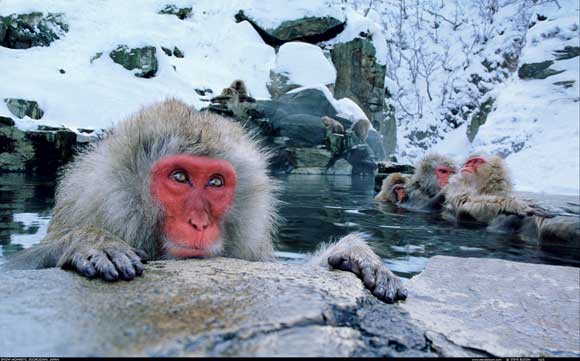
Snow Monkey, Japan – ‘These were sitting in a hot mountain spring amid the snow; air temperature was about -10°.’ Canon EOS 1n. Canon 28-70mm. 1/125sec @ f/11.
Wildlife Photographer Travel
As Steve has traversed the globe to photograph his wildlife subjects in their natural environment, we feel obliged to ask if he has a favourite location or favourite animal he likes to shoot.
‘They are all special in different ways,’ he replies. ‘I love different places for different reasons. Antarctica, for example, gives you a wonderful sense of how small we are in the universe. Then you go somewhere like India with all its colour and vibrancy and you see a very rare, wild tiger, and this gives you both a sense of how wonderful the Earth is and how important it is that we preserve it.
‘And of course I love returning to Africa. I love seeing the big game and the elephants in the water – I could watch them all day.’
And what exactly is it that Steve is looking to capture when he has a swimming elephant, a preening orangutan or perhaps even a dancing Verreaux’s sifaka in his viewfinder? What makes the difference between a good shot and a great shot?
‘I am driven by aesthetics,’ he says. ‘That is, by the compulsion to try to penetrate the emotional core of what it is I’m photographing, and to attach meaning to the experience in much the same way that an artist or musician might. Of course, to do this you have to be able to use your equipment so well that operating it becomes part of your subconscious. When you can use your Brown bears don’t like being surprised, so you can’t creep up on them equipment instinctively like this then you are free to concentrate on the emotional side of what you are photographing.’
Wildlife Photography Equipment
Speaking of equipment, what camera kit does Steve prefer when working with wildlife? Has he stuck with his first camera brand Canon, or has he since moved over to one of its rivals?
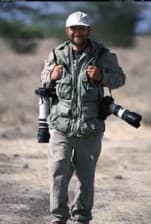 ‘I’ve always been a Canon user,’ he reveals. ‘From the Canon FTB 35mm film SLR I used in South Africa to the EOS 1Ds Mk III cameras that I currently have. The Canon system has always worked well for me and I’ve had very few problems with it.
‘I’ve always been a Canon user,’ he reveals. ‘From the Canon FTB 35mm film SLR I used in South Africa to the EOS 1Ds Mk III cameras that I currently have. The Canon system has always worked well for me and I’ve had very few problems with it.
‘When I returned from the safari in 1994 I immediately went out and bought my own EOS 1 along with a set of lenses including a 600mm, a 300mm, a 70-200mm zoom, a 17-35mm zoom and a 24mm wideangle prime. That set-up served me extremely well for many years before digital arrived.’
So what was the first digital camera to tempt him away from 35mm film?
‘That would be the Canon EOS 1Ds Mk I. At the time of buying it I did some tests to compare it to film and felt it was there at 11 megapixels. From that point on I started doing digital wildlife photography.
‘Since then I have with the Canon 1Ds series, owning every new incarnation of it – from the original 11MP 1Ds, to the 16.7MP 1Ds Mk II and the 21MP 1Ds Mk III version.’
And how does he find Canon’s current top-end DSLR? Are there any ways in which it has helped to improve his photography?
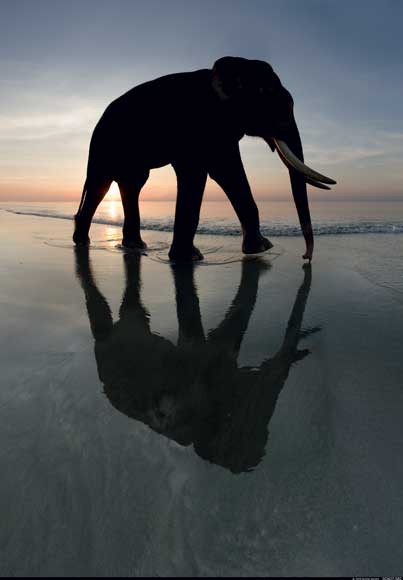 ‘The 1Ds Mark III is an absolutely fantastic camera,’ he says. ‘Once I’d got it I went to northern Canada to photograph polar bears and it was the coldest I’ve ever been; it got to -49°C and Canon hadn’t tested the camera in those kind of conditions. But I found that it worked fantastically. One thing that was really interesting was that I was able to shoot at quite a high ISO in the cold because the colder the camera the less visual noise there is, because it’s often the heat of the camera that creates the digital grain. I was shooting at ISO 400 and getting remarkably little noise.
‘The 1Ds Mark III is an absolutely fantastic camera,’ he says. ‘Once I’d got it I went to northern Canada to photograph polar bears and it was the coldest I’ve ever been; it got to -49°C and Canon hadn’t tested the camera in those kind of conditions. But I found that it worked fantastically. One thing that was really interesting was that I was able to shoot at quite a high ISO in the cold because the colder the camera the less visual noise there is, because it’s often the heat of the camera that creates the digital grain. I was shooting at ISO 400 and getting remarkably little noise.
And are there any things about the 1Ds that he would change, given the chance? ‘Well, for the past few years I’ve stopped using the motordrive,’ he replies. ‘Obviously, for many wildlife photographers a motordrive helps to capture fast-moving action, but for me I am more interested in using my brain and my eye-to-hand co-ordination to make the decision as to exactly when I am going to press the shutter. Even if there is something very exciting happening. I like to engage and feel like there is some kind of connection between the subject and me, and I don’t get that with a motordrive.’
So overall, what advice for photographers does Steve suggest? ‘I think it’s a great challenge for people to say, “I’m only going to take 10 exposures today” and they’ll then find that those 10 exposures are pretty good if they are really thinking about them.’
Wildlife Photography Kit Bag
We take a look inside Steve’s kit bag…
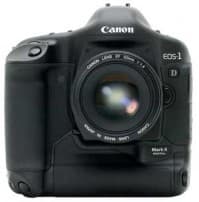 Canon EOS 1Ds Mk III
Canon EOS 1Ds Mk III
£8600 I carry two camera bodies, one of which is a Mk III – my biggest fear has always been that I go on a trip costing a lot of money and all my equipment breaks down. It has a much larger screen on the back than previous cameras, which makes it easier to work with particularly in bright sunlight. The 21MP sensor is also much larger than previous versions, which allows you to crop in without losing too much resolution. It’s a very responsive camera with regards to coping with high ISOs. If there’s one area the camera could be improved it would be its weight – it’s tough to make something that needs to be rugged and light as well, but they are getting lighter.
15mm Canon EOS Fisheye
£830 I use this lens specifically for underwater work. I do occasionally use it on dry land, but though the characteristic distortion of a fisheye is quite an interesting effect it’s not something I tend to go for in most of my work. But underwater a fisheye is essential because the distortion is minimised as water refracts light differently, making it ideal for capturing larger subjects.
Canon 24mm f/2.8
£620 I primarily keep this as a spare lens in case the 16-35mm fails. Being a prime lens it’s optically a bit better. Although zoom lenses have been improving in quality to such an extent that I’m not really bothered by using a wideangle zoom.
Canon 16-35mm f/2.8
£1690 Canon used to make a 17-35mm but this replaced it. This is the second generation and the optics have been improved quite a lot. Although I carry a 24mm prime, I don’t use it that much, preferring this lens. At 16mm you have quite an extreme wideangle.
 Canon 24-70mm Canon f/2.8
Canon 24-70mm Canon f/2.8
£1450 I use this lens more than any of my other wideangle lenses because it’s not too wide and also because it offers me a 50mm focal length, which most closely approximates the human eye (if using full-frame 35mm sensor). It’s an ideal lens when photographing people and wildlife in close proximity and you can also zoom out to 70mm, which is good for portraiture.
Canon 300mm f/4
£7800 £1640 This is a fairly lightweight lens that makes it good for handheld use. Because it’s light you can track things. At 300mm it’s a good mid-range telephoto lens for wildlife use.
Canon Speedlite 580 EX Flash
£540 Speedlites are synchronised with Canon’s cameras and lenses and are quick to use. Generally I use them for fill-in flash – you can deliberately under-flash, say if you just want to bring a bit of sparkle to the eyes. I like to use natural light with just a tiny bit of flash, but indoors I use various bounce devices as it’s quite powerful.
Gitzo Carbon Tripod
From £270 I always take a carbon tripod with me in the field because they are very, very lightweight and very strong. Although I’m finding with digital that with the ability to up the ISO and use image-stabilising lenses I’m using tripods less and less.
 Jobo GIGA Vu SONIC Portable Storage
Jobo GIGA Vu SONIC Portable Storage
From £360 Although I have my notebook computer which I can download my images to, I store my images to a second device just in case.
Sandisk Memory Cards
Around £60 I mostly use 8GB cards. The EOS 1ds takes both CF and SD cards, but I’ve always used CF cards, simply because they used to hold more data. That is changing now as SD cards can hold about the same amount of data. The very first cards were half a gigabyte.
Dell Notebook Computer
From £329 I started off using PCs, so I’ve stuck with it as I’ve upgraded because switching to Mac has certain cost implications. I may be quite unusual in this respect but I find doing graphics work on a PC fine. I use Adobe CS4 for all of my images and book publishing work.
Lacie Rugged Portable Hard Drive
From £70 The Lacie Rugged is small and lightweight, holds masses of data and is quite tough too. I can bung my images on it and make a third backup of everything.
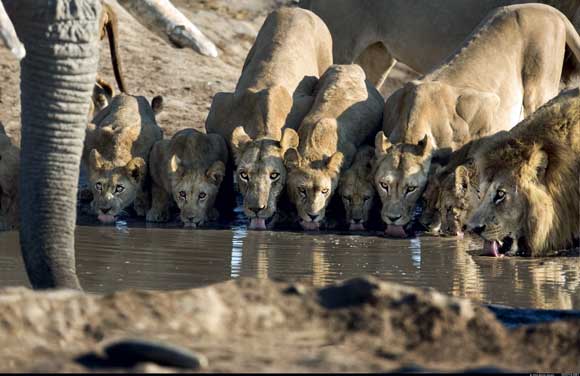
Lions, Botswana – ‘The lions had to drink quickly; they had killed an elephant the night before and the elephants were quite angry and hogging the water hole.’ Canon EOS 1D Mk II. Canon 500mm IS. 1/500sec @ f/11.







